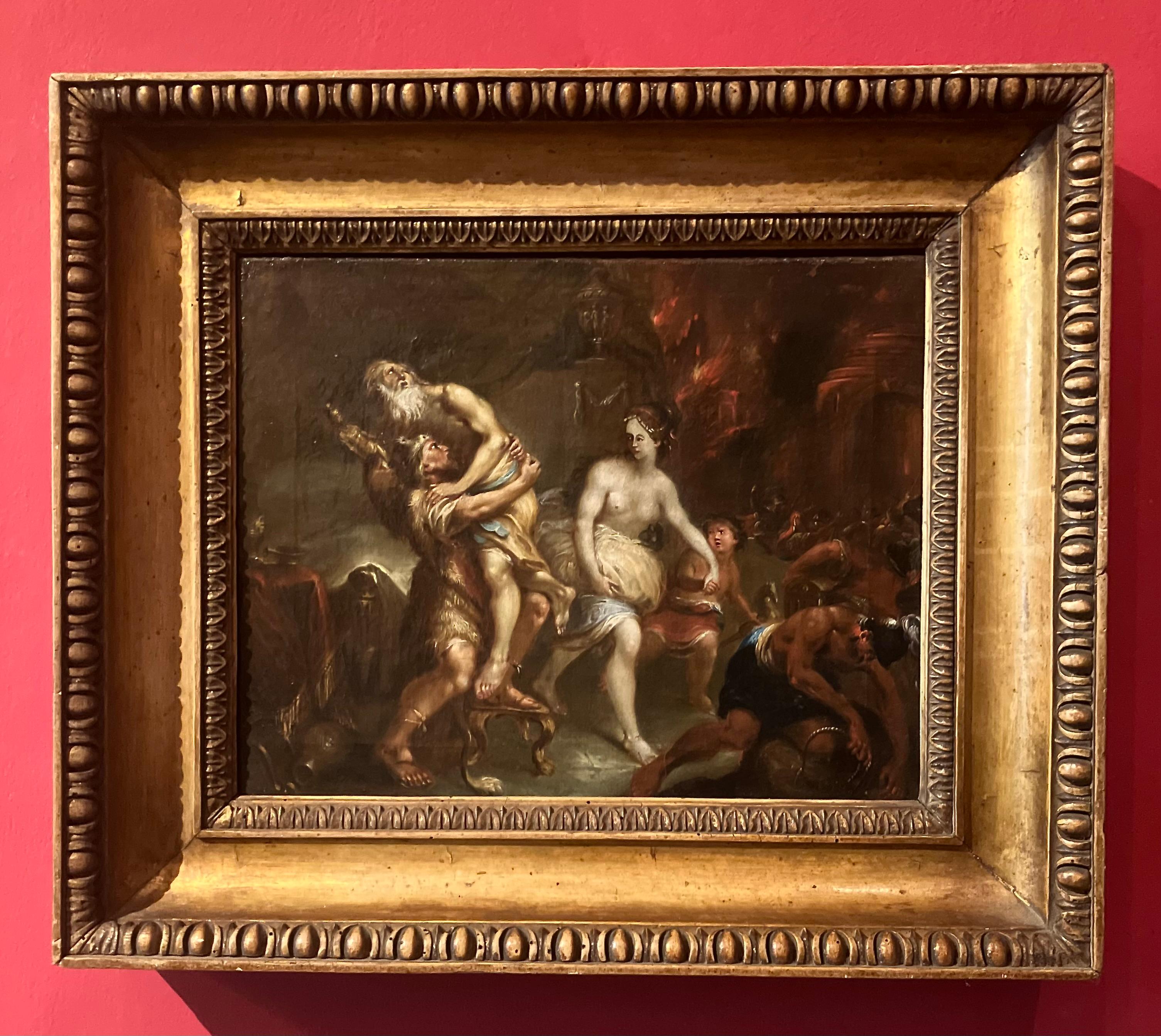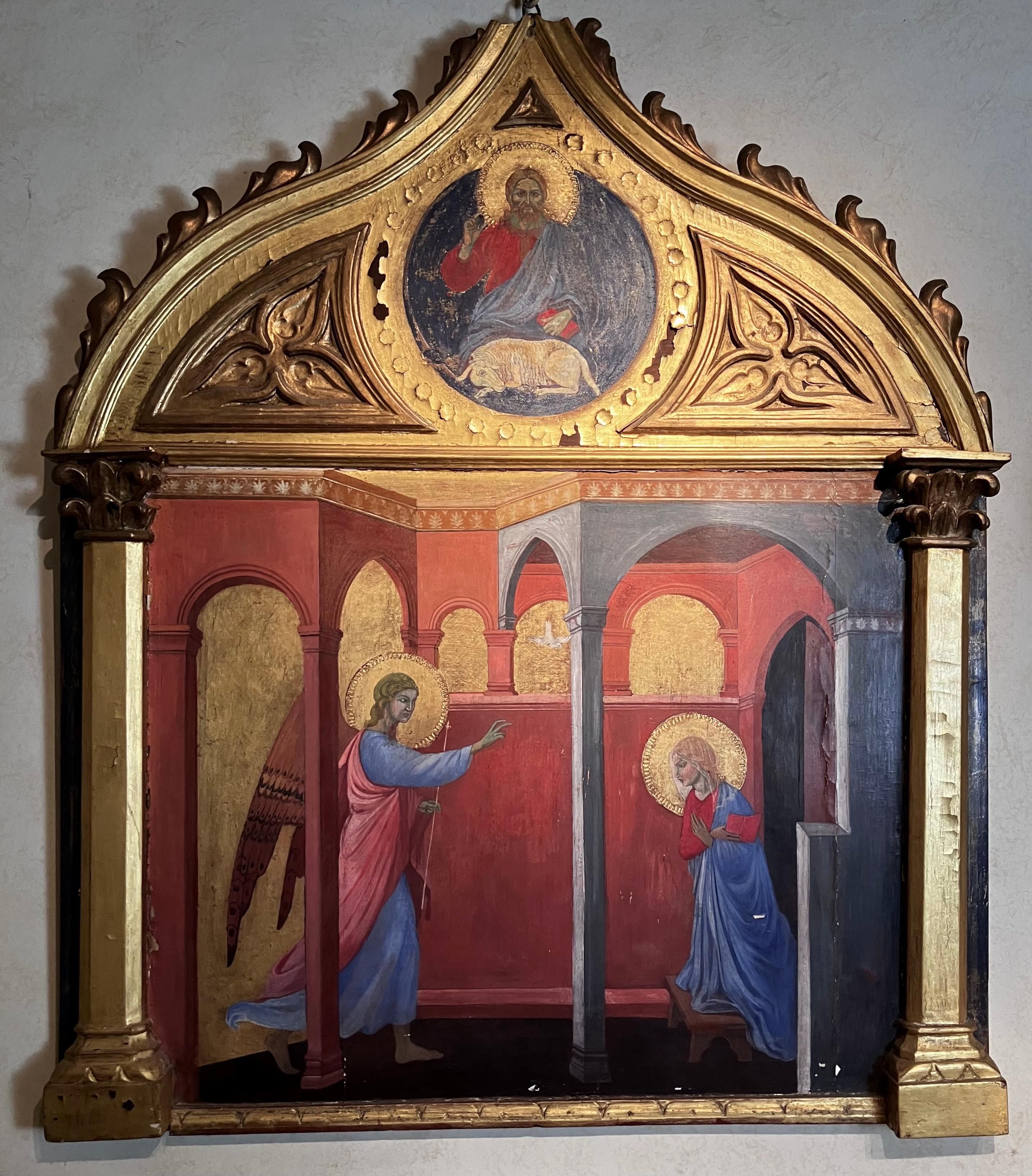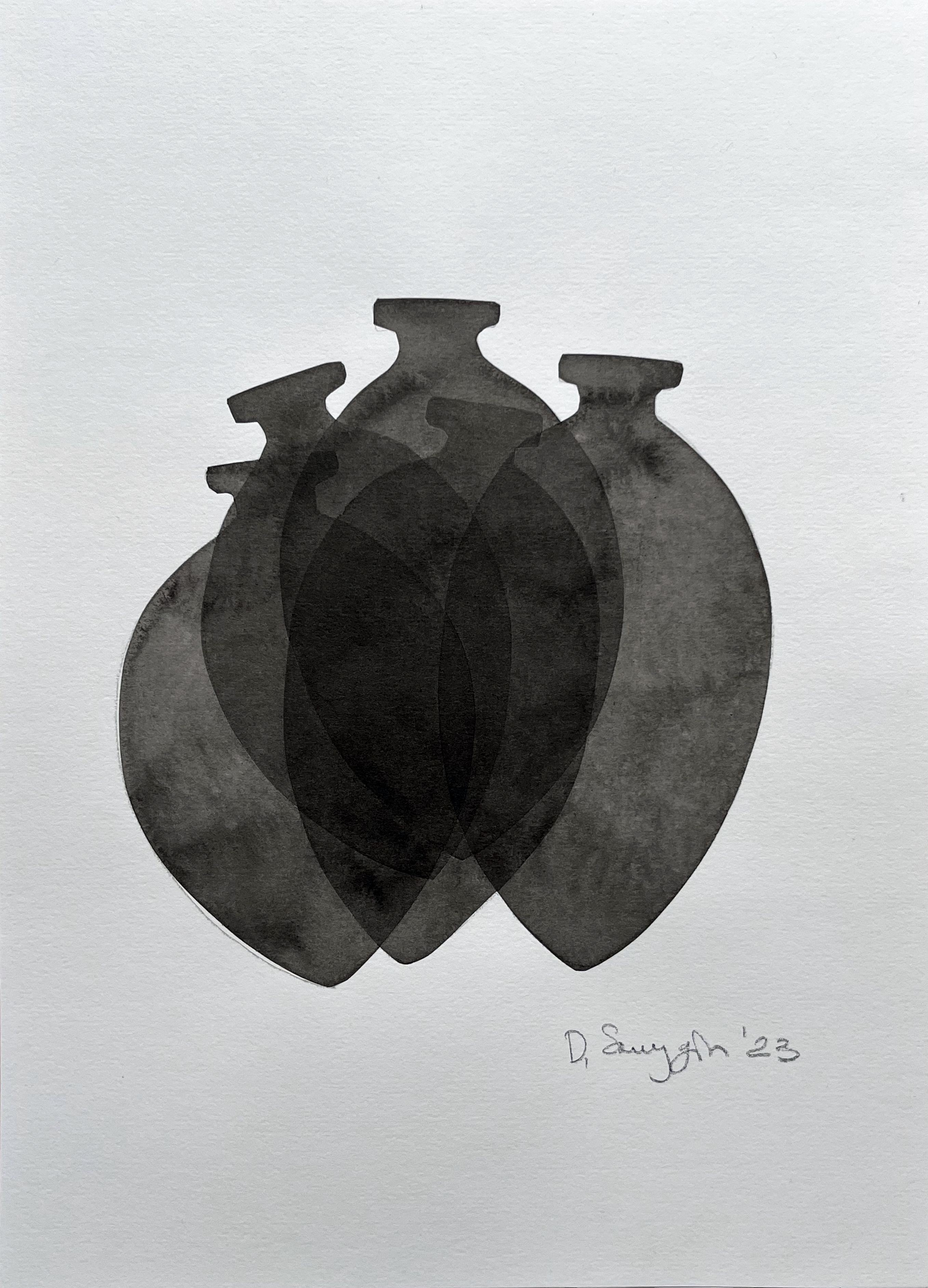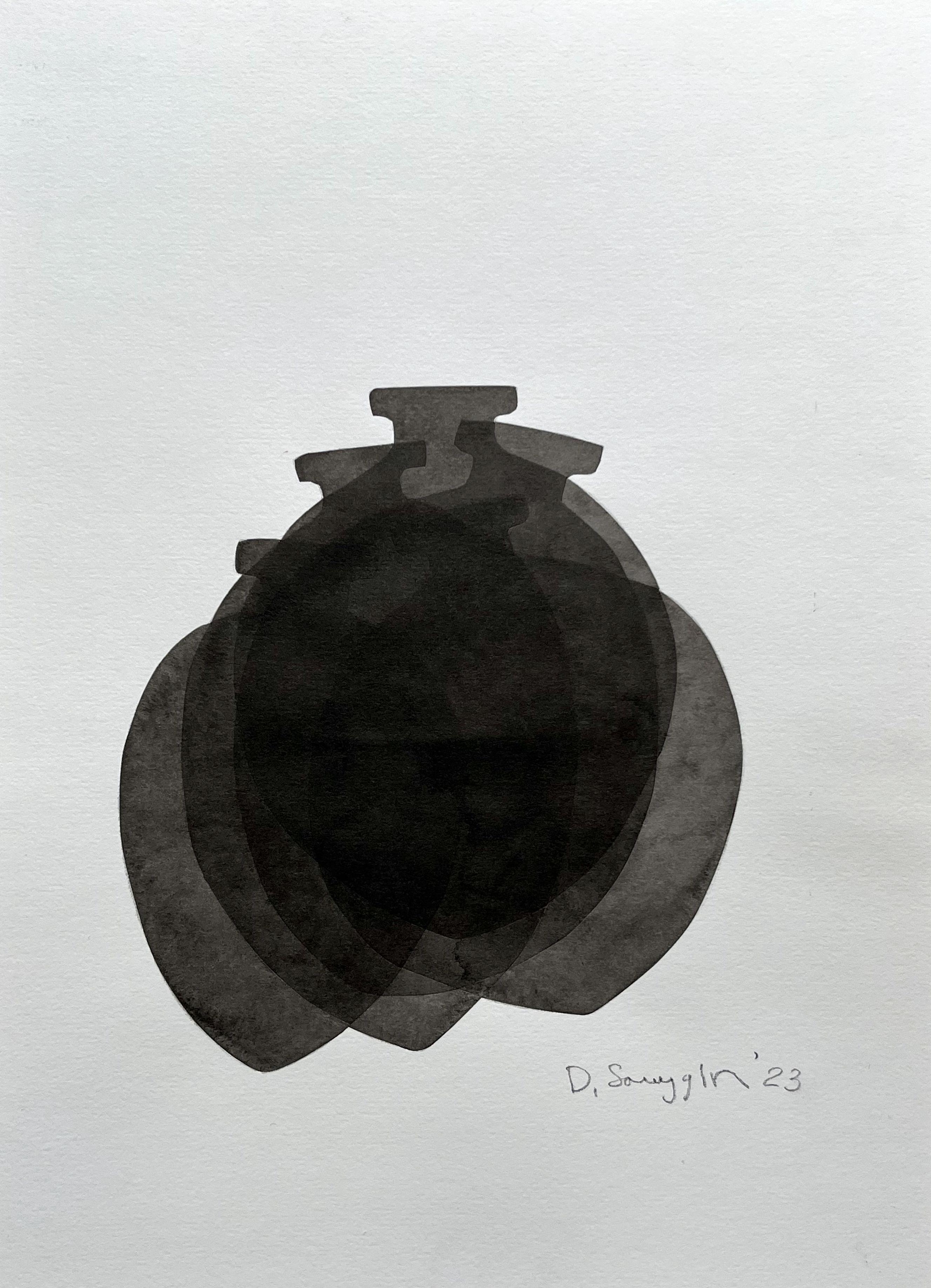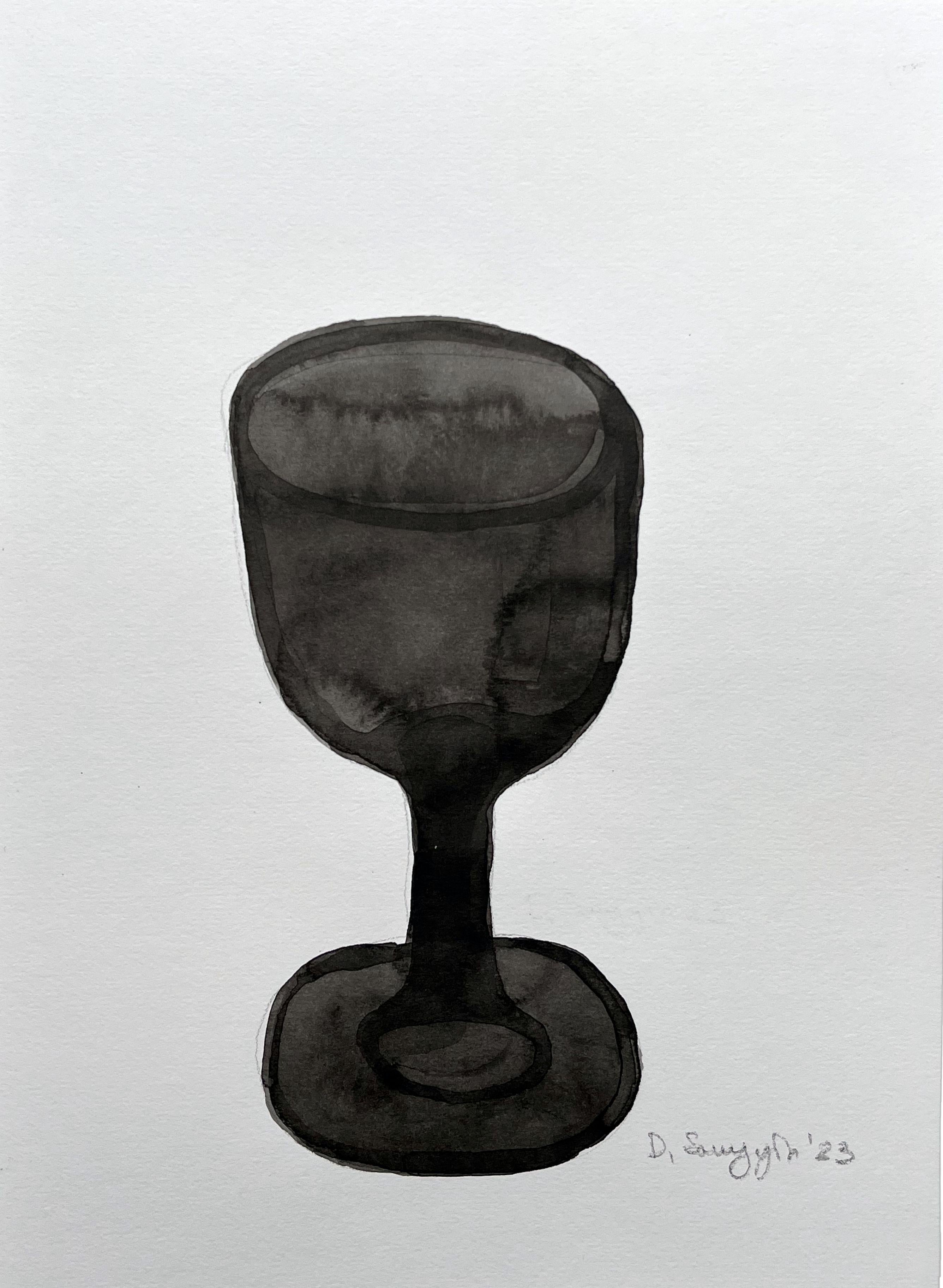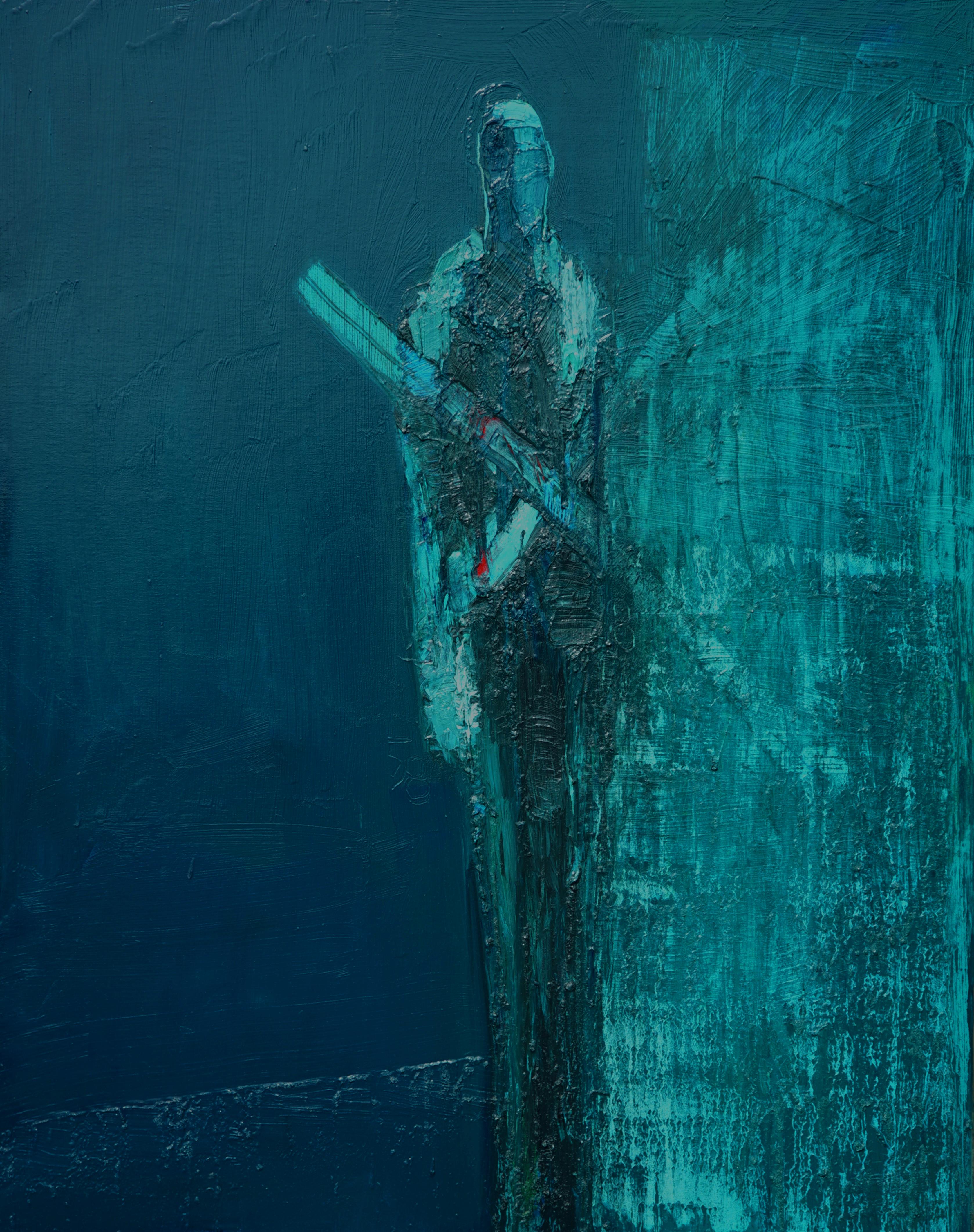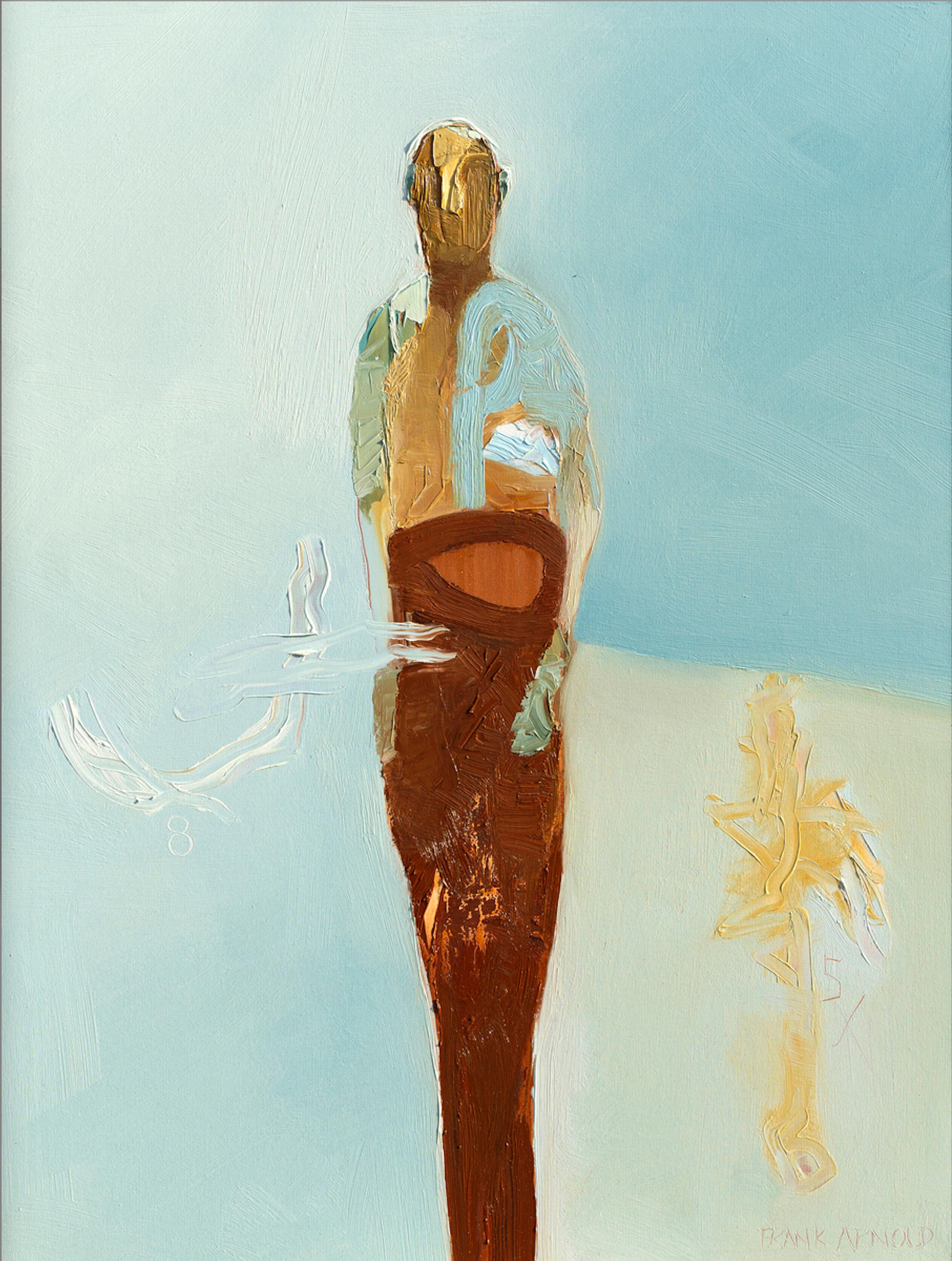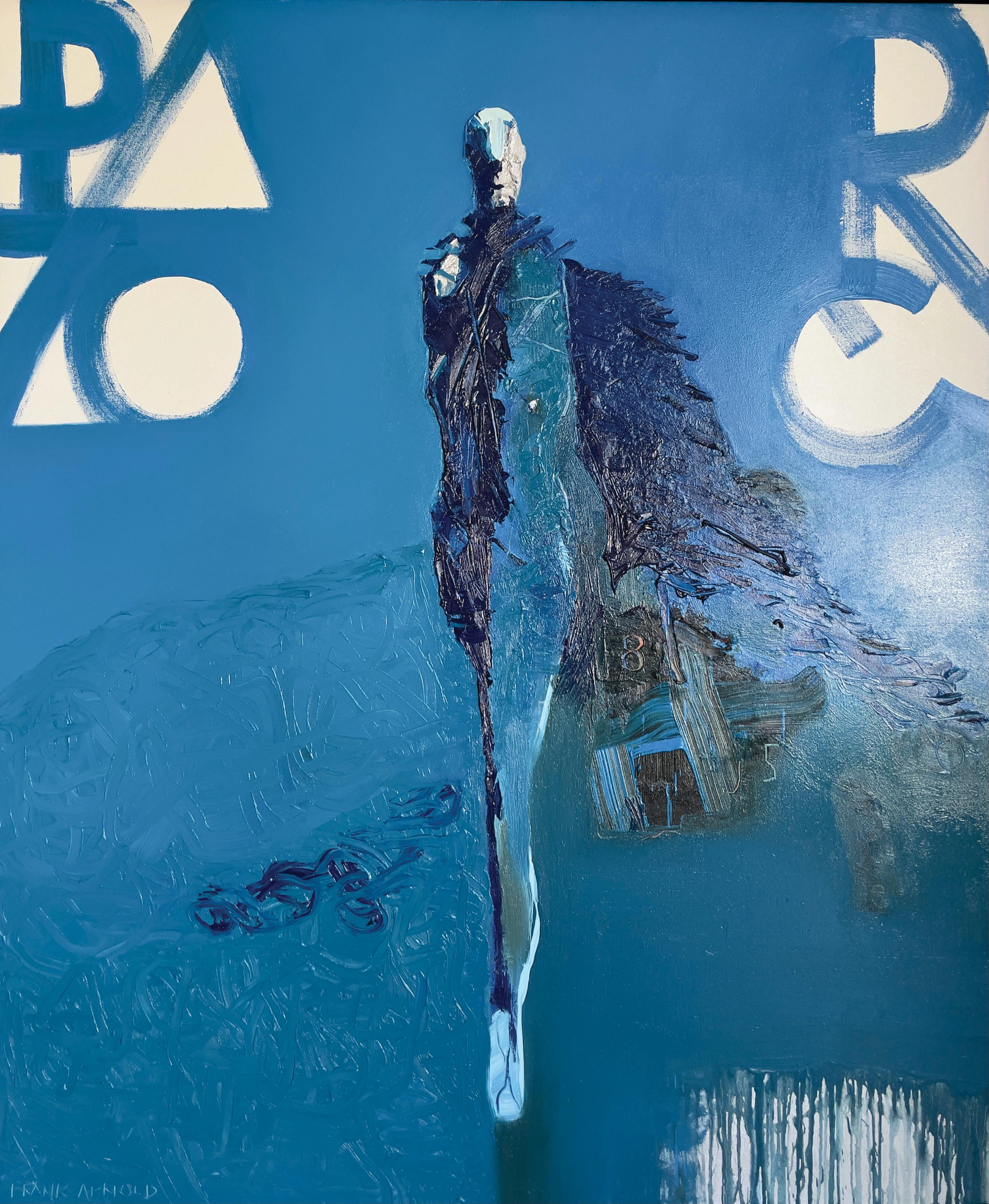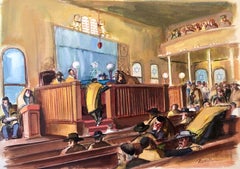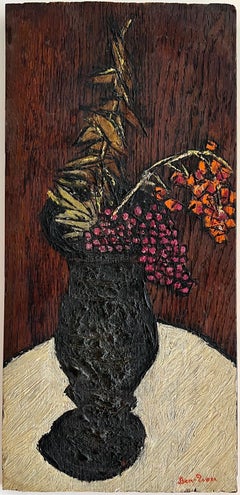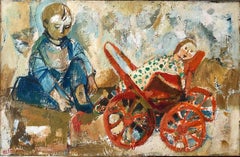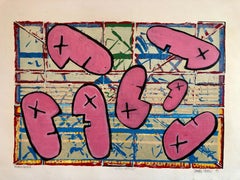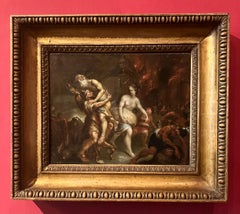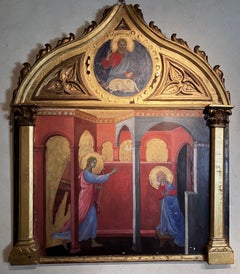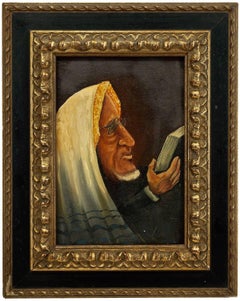
Belgian Modernist Judaica Oil Portrait of a Rabbi
View Similar Items
Want more images or videos?
Request additional images or videos from the seller
1 of 7
UnknownBelgian Modernist Judaica Oil Portrait of a Rabbi
$550List Price
About the Item
- Dimensions:Height: 16.75 in (42.55 cm)Width: 13.5 in (34.29 cm)
- Period:
- Condition:minor wear to surface, scuffing.
- Gallery Location:Surfside, FL
- Reference Number:1stDibs: LU3822044283
About the Seller
4.9
Platinum Seller
Premium sellers with a 4.7+ rating and 24-hour response times
Established in 1995
1stDibs seller since 2014
1,777 sales on 1stDibs
Authenticity Guarantee
In the unlikely event there’s an issue with an item’s authenticity, contact us within 1 year for a full refund. DetailsMoney-Back Guarantee
If your item is not as described, is damaged in transit, or does not arrive, contact us within 7 days for a full refund. Details24-Hour Cancellation
You have a 24-hour grace period in which to reconsider your purchase, with no questions asked.Vetted Professional Sellers
Our world-class sellers must adhere to strict standards for service and quality, maintaining the integrity of our listings.Price-Match Guarantee
If you find that a seller listed the same item for a lower price elsewhere, we’ll match it.Trusted Global Delivery
Our best-in-class carrier network provides specialized shipping options worldwide, including custom delivery.More From This Seller
View AllModernist American Judaica Painting Synagogue Interior Ladies Section WPA Era
By Ervin B. Nussbaum
Located in Surfside, FL
Titled Torah Service, hand signed on Arches archival paper.
In this painting, Nussbaum portrays a joyful holiday celebration of the Torah reading in the synagogue in a sketch-like m...
Category
20th Century Modern Figurative Paintings
Materials
Gouache
American Modernist Oil Painting Expressionist Vase, Flowers WPA Artist Ben ZIon
By Ben-Zion Weinman
Located in Surfside, FL
Ben-Zion (1897-1987)
Flower Piece with Black Vase
Oil on board, Hand signed 'Ben-Zion ' lower right, with the artist 's label and label from Duveen-Graham gallery, NY.
16 x 7 3/4 in., unframed as intended,
Born in 1897, Ben-Zion Weinman celebrated his European Jewish heritage in his visual works as a sculptor, painter, and printmaker. Influenced by Spinoza, Knut Hamsun, and Wladyslaw Reymont, as well as Hebrew literature, Ben-Zion wrote poetry and essays that, like his visual work, attempt to reveal the deep “connection between man and the divine, and between man and earth.”
An emigrant from the Ukraine, he came to the US in 1920. He wrote fairy tales and poems in Hebrew under the name Benzion Weinman, but when he began painting he dropped his last name and hyphenated his first, saying an artist needed only one name.
Ben-Zion was a founding member of “The Ten: An Independent Group” The Ten” a 1930’s avant-garde group, Painted on anything handy. Ben-Zion often used cabinet doors (panels) in his work. Other members of group included Ilya Bolotowsky, Lee Gatch, Adolf Gottlieb, Louis Harris, Yankel Kufeld, Marcus Rothkowitz (later known as Mark Rothko), Louis Schanker, and Joseph Solman. Over the course of the group's existence, seventeen artists exhibited as members of The Ten at nine different shows. The group's nine shows were held at galleries and locations around New York City, including one international exhibition in Paris. David Burliuk, Lee Gatch, John Graham, Earl Kerkam, Karl Knaths, Edgar Levy, Jean Liberté...
Category
Mid-20th Century Expressionist Figurative Paintings
Materials
Oil, Wood Panel
Israeli Oil Painting Ruth Schloss Child, Doll, Wagon, Kibbutz Social Realist Art
By Ruth Schloss
Located in Surfside, FL
Large magnificent colorful Ruth Schloss oil painting of a child with a wagon with a doll or a baby in a carriage stroller.. Signed in Hebrew
size measures 31x43 with frame , 23x35.25 without the frame. (this is being sold unframed).
Ruth Schloss (22 November 1922 – 2013) was an Israeli painter and illustrator who mainly depicted neglected scenes such as Arabs, transition camps, children and women at eye-level as egalitarian, socialist view via social realism style painting and drawing.
Schloss became Israeli painting’s sensitive, conscious, remembering eye.
Ruth Schloss was born on 22 November 1922, in Nuremberg, Germany, to Ludwig and Dian Schloss, as the second of three daughters of bourgeois assimilationist Jewish family well-integrated into German culture. As the Nazis came into power in 1933, her family immigrated to Israel in 1937, and settled in Kfar Shmaryahu, then an agricultural settlement. Schloss studied at the Department of Schloss graphic design at "Bezalel" from 1938 to 1942 alongside Friedel Stern and Joseph Hirsch. She was a realistic painter who focused on disadvantaged people in the society and social matters as an egalitarian. Her realism was thus an “inevitable realism,” motivated by an inner necessity: the need to observe reality as it is.
Her painting repeatedly addressed the door pulled from its frame, employing drawing’s unique ability to stop time and prolong the image’s persistence in the retina, she repeatedly committed to paper - in a matter-of-fact, non-evasive manner devoid of mystery – man’s tendency to generate chaos, suffering and pain.
Throughout her life, Schloss remained minimalist. Painting about human fate was the main subject of her artworks. Her natural inclination was to describe the darker aspect of human existence.
1930s
The Schloss household was characterized by open, liberal spirit, in keeping with the parents’ progressive views. It deeply influenced Ruth’s mental development, as she learned to tie culture and art with sensitivity towards the weak and underprivileged.
In Jerusalem, she joined a commune of Hashomer Hatzair in which she shaped her socialist views, which she maintained throughout her long career.
1940s
In this period she mainly depicted landscapes of kibbutz and wretched women living hard life, children in huger, older people, refugees. After completing her art studies, Schloss joined a training group at Kibbutz Merhavia in 1942, and after two years moved to Karkur region, the nucleus established Kibutz Lehavot Habashan in the Upper Galilee. Through this time, she fell in love with the surroundings and drew landscapes. They are simple and direct with fresh, lucid lines. These paintings were selected as the main works of her first exhibition in 1949.
In early 1945, Schloss started to draw illustrations in the children’s magazine Mishmar Leyeladim, and designed the logo of Al Hamishmar, the paper’s new name in 1948. In 1948, upon the founding of Mapam (United Workers’ Party), she designed her party’s emblem, which became a well-known icon. She kept working as an illustrator for Mishmar Layeladim until 1949.
"Mor the Monkey" project yielded financial profits and this income was used for a study trip to Paris for two years. She was succesfull as illustrator however, she had inner conflicts of her identity as witnessed painter toward neglected class in Israeli society.
First Exhibition at Mikra-Studio Gallery, 1949
She presented forty drawings on paper in her first solo exhibition, representing a selection of the themes of kibbutz landscape, its lifestyle. Schloss confidently proposed her direction through simplicity without using colors in her drawings.
1950s
Between 1949 and 1951, she studied at the Académie de la Grande Chaumière in Paris.
She began working in oils, with which she continued throughout the 1960s.
The exhibition “Back from Paris” opened in November 1951 at Mikra-Studio Gallery .
In 1951 she married Benjamin Cohen, who served as chairman of the national leadership of Hashomer Hatzair Workers Party in Tel Aviv. He was a theoretician and a man of principle, highly esteemed by its leaders who became a professor of history at Tel Aviv University. In 1953, following the Mordechai Oren affair and the publication of Moshe Sneh 's followers from Kibbutz Artzi, she and her husband left the kibbutz and moved to the agricultural farm, Kfar Shmaryahu, where she lived until her death.
At a certain point in Israeli history, segments of the socialist movement felt that Israel should become part of the Communist bloc, rather than seek the support of the western world. Because the Schloss couple support of Moshe Sneh’s left-wing party, they had to leave the kibbutz.
She loved to depict ordinary women as figurative on her painting without hiding or making up anything. The poet Natan Zach wrote about her works in 1955: “Her motto remains that which has been all these years: life as it is, without bluffing."
Schloss’s “Pietà” (1953) became a universal cry expressing the pain of mothers on either side of the divide. In the late 1950s, she was the mother of two daughters. When she drew her daughters, unlike the universal babies she depicted, naked and with clenched fists, the painting of her children employed babyish sweetness to the full in a quiet, peaceful and heart-stirring filling rather than urgency. She also painted children in the transition camp and Jaffa in the 1950s and 1960s.
1960s-1980s – The period of Studio in Jaffa
Schloss painted at a studio in Jaffa from 1962 till 1983. In this time, she turned her interest to people around her more than kibbutz – the children, mothers, and poor workers, the alleys and houses. She opened the space to the street and its dwellings, built interactions around it, and was nurtured by the presence of the outside in her work.
1960s Schloss familiarized to an Arab woman, Nabava, lived in poor. Schloss returned to painting images of old people later, and she called her painting figurative elderly people in the old age homes “waiting”.
In the late 1960s, Ruth discovered acrylic paint and never turn back to oil painting.
In 1965 Schloss devoted a series “Area 9 (1965)”, dedicated to the demolition of Israeli-Arab houses and the expropriation of the land, and carried a definite socio-political messages. The series was exhibited at Beit Zvi, Ramat Gan, in 1966. She was the only artist who addressed the result of the Six-Day War immediately afterward. In 1968, Schloss and Gansser-Markus presented “Drawing of War” in Zurich gallery. She expressed the war as an ultimate expression of destruction and ruin, regardless of victors and vanquished.
1970s In late 1970s Schloss began printing the selected photograph directly on the canvas, posterior reworking it in acrylic. She decided to print her work at Har-El Printers in Jaffa, and these became the surface of her painting. This technique was mainly adopted in two large series: Anne Frank (1979-1980) and Borders (1982). Through this technique she placed the figure of elder Frank next to that of the famous young Frank, and released it at the exhibition at Bet Ariela Cultural Center, Tel Aviv, in 1981. The series touched upon the Nazi Holocaust.
1980s The Lebanon War raised the question of “The Good Fence” and the effect of the war. She dedicated a large series Boarders, one of the most powerful image linked to the series is the figure of Yemenite woman raising her hand. She was the first to raise the Black Panthers demonstration to the level of a social icon. In the 1980s and again in 2000, the Intifada uprisings also led Schloss to the easel to render a good number of representational and symbolic works that in their way denounced Israel's political and military actions.
1990s – 2000s Ruth Schloss never had an exhibition in a major Israeli museum. Her works were presented in private galleries and small museums. The main museums, the Tel Aviv Museum of Art and the Israel Museum, included her works only in group exhibitions, and only in 1991 was her retrospective exhibited at the Herzliya Museum.
In the 2000s, Schloss’s metaphors turned into animal kingdom and Bedouins in the south. A huge rhinoceros, birds of prey, and other "bad animals," as Cohen Evron, daughter of Ruth, calls them and "I connected this to the Nazis," said Schloss. Schloss' work after she didn't find human expression able to transmit the endless cruelty she saw in Israel's political mentality.
Schloss also continued to follow and collect documentary photographs of destructions of houses from the war, the Intifada, the sequence of her work about ruin from 1949 to 2005, was a cumulative testimony about the painful history of Israel and Palestine.
In 2006, a large retrospective exhibition of her work was presented at the Museum of Art in Ein Harod, curated by Tali Tamir.
Education
1938-41 Bezalel Art Academy, Jerusalem, with Mordecai Ardon
1946 painting course for Kibbutz Artzi artists with Yohanan Simon and Marcel Janco
1949-51 Académie de la Grande Chaumière, Paris
Awards and recognition
1965 Silver Medal, International exhibition in Leipzig, Germany
1977 Artist-in-Residence, The Cité Internationale Universitaire de Paris
Selected solo exhibitions
2004 “Micha...
Category
Mid-20th Century Realist Figurative Paintings
Materials
Canvas, Oil
1990's Graffiti Artist. Mixed Media Painting Bold Colorful New Wave NYC Panama
By Tabo Toral
Located in Surfside, FL
Blind Heads, mixed media painting
Tabo Toral, Panamanian (1950 - ) Born Boquete, Chiriquí. Panamanian painter.
Studied plastic arts in the United States b...
Category
1990s Street Art Abstract Paintings
Materials
Mixed Media, Acrylic
Modernist Judaica "Les Valises" French Jewish Modernist Mixed media Oil Painting
By Alain Kleinmann
Located in Surfside, FL
Painting measures 28 X 36 inches. There is a sulpture quality to the suitcase, it has texture to the piece. It subtly recalls the european Holocaust, travel and displacement. Provena...
Category
20th Century Modern Figurative Paintings
Materials
Canvas, Mixed Media, Oil
Large Suong Yangchareon Thai American Photorealist LA California Street Painting
Located in Surfside, FL
Suong Yangchareon (Thai American, 1952-)
Acrylic on Canvas
Los Angeles Street Scene with yellow taxi cab and cars.
Hand signed with Initials.
Dimensions: Overall Size: 25 1/4 x 49 1/4 in. Sight Size: 23 5/8 x 47 5/8 in.
Yangchareon came to Los Angeles, California from Lampang, Thailand, Southeast Asia where he studied Fine Arts at the Arts & Crafts College (Poh Chang), Bangkok, Thailand and Sculpture and Graphic Arts, Silpakorn University, Bangkok, Thailand. In California he continued his studies at Woodbury University, receiving a degree in Advertising Design. He is a contemporary figurative realist artist. He painted the urban landscape of California, which have been exhibited in solo and group shows. His work is represented by prominent galleries nationally. Yangchareon spent much of his childhood at his father’s movie theater where he became fascinated with the world of American Westerns. The nostalgia for this idyllic film Americana can be garnered through his subject matter. Abandoned theaters, factories and businesses of an almost extinct era of architecture are carefully rendered in the soft morning light. Working from his own photography, shot during the early hours of the day, Yangchareon’s acrylic and oil paintings are largely devoid of human figures, but deeply imbued with their past presence. Recently, the artist has broadened his focus to include imagery of the city at night––rendering glistening rain-soaked sidewalks bathed in the artificial light of street lamps and movie marquees against an inky black sky. Yet, Yangchareon’s motivation remains the same; to find the hidden beauty in varying industrial landscapes and seeing splendor where most would argue it does not exist. Reminiscent of Edward Hopper, a sense of melancholy pervades his compositions in a quiet, detached manner. The influence of Richard Diebenkorn and Wayne Thiebaud can also be detected in the artist’s sense of color and in his interpretation of light. Moody LA auto culture artwork dealing with themes of isolation and alienation.
Select Exhibitions
2017 Golden Dreams, The Hilbert Museum of California Art at Chapman University, Orange, CA
2016 In the Land of Sunshine: Imaging the California Coast Culture, Pasadena Museum of California Art
2016 Recent Paintings & Works on Paper, Paul Thiebaud Gallery, San Francisco, CA
2013–2014 Suong Yangchareon: Places Out of Time, St. Supéry Estate, Vineyards & Winery, Rutherford, CA
2012 Palm Springs Fine Art Fair, Palm Springs Convention Center
LA Art Show, Los Angeles Convention Center
Paintings, Paul Thiebaud Gallery, San Francisco, CA (solo)
Texas Contemporary Art Fair, George R. Brown Convention Center,
artMRKT San Francisco, Concourse Exhibition Center
Art Chicago 2011, Merchandise Mart, Chicago, IL
2010 San Francisco Fall Antiques Show, Fort Mason, San Francisco, CA
San Francisco Fine Art Fair, Fort Mason, San Francisco, CA
Art Chicago 2010, Merchandise Mart, Chicago IL
2009 Recent Paintings, Paul Thiebaud Gallery, San Francisco, CA (solo)
2008 Twenty-Five Treasures, Paul Thiebaud Gallery, San Francisco, CA
Robert Arneson, Joan Brown, Fred Dalkey, Eileen David,
Roy De Forest, Richard Diebenkorn, David Fertig, John Graham,
Robert Hudson, Ed Musante, Manuel Neri, Arthur Okamura,
John Santoro, Richard Shaw, Pam Sheehan...
Category
20th Century Figurative Paintings
Materials
Canvas, Acrylic
You May Also Like
Italian 18th Century Oval Religious Oil on Canvas Painting with Saint Dominic
By Francesco de Mura
Located in Firenze, IT
This beautiful Italian 18th Century old masters oil painting on oval canvas with giltwood frame is attributed to Solimena and features a religious scene.
In this splendid oval-shaped painting are depicted Saint Dominic...
Category
18th Century Old Masters Figurative Paintings
Materials
Canvas, Oil
Italian Oil on Canvas Painting Coat of Arms in Gold Leaves Panel and Black Frame
Located in Firenze, IT
This huge Italian 19th century armorial painting features the coat of arms of Montini, a noble Italian family that
has among its ancestors the Archbishop of Milan, later known as Pope Paul VI.
The large oval canvas has a brown and red background, the latter shaped like a shield, in which six mountains
(from the etymology of the surname) and three white fleur de lis are painted.
This big scale palatial oil painting...
Category
Late 19th Century Italian School Figurative Paintings
Materials
Oil, Canvas, Wood
Aeneas Fleeing the Burning of Troy, 17th Century Flemish Oil on Canvas Painting
Located in Firenze, IT
This oil painting on canvas, created by an artist from the 17th Century Flemish School, depicts one of the most significant scenes from Greco-Roman mythology: Aeneas saving his famil...
Category
17th Century Dutch School Figurative Paintings
Materials
Canvas, Oil
Italian Renaissance Style Tempera on Gold Ground Panel Painting the Annunciation
Located in Firenze, IT
This Italian tempera painted on gilt wood gold ground panel is a Tuscan religious artwork in the style of late Renaissance - early Gothic period. The sc...
Category
19th Century Renaissance Figurative Paintings
Materials
Gold Leaf
Italian Oil on Alabaster Painting Pompeian Interior Scene in Ormolu Frame
Located in Firenze, IT
This Italian 19th century oil on alabastrer painting depicts an opulent interior in full ancient neoclassical Pompeian style with people festing.
The figurative inner scene is painted on a rectangular alabaster slab and housed in a wonderful giltbronze frame resting on casted arrow feet.
This is a single section of a bigger surtout de table. You can now use it as a decorative centrepiece on a table or on a console or turn it into a wall decoration. We can provide framing options in this case.
The characters enjoy a rich banquet in an elaborate interior, the room renderings...
Category
19th Century Italian School Interior Paintings
Materials
Alabaster, Bronze
Italian Impressionist Oil on Board Marine Landscape Painting Naples Bay View
By Francesco Coppola Castaldo
Located in Firenze, IT
Everyday fishermen life is captured in this wonderful Italian impressionist late 19th century oil painting on thin board titled fishermen ashore. We love the neutral and natural colo...
Category
Late 19th Century Impressionist Landscape Paintings
Materials
Oil, Board

